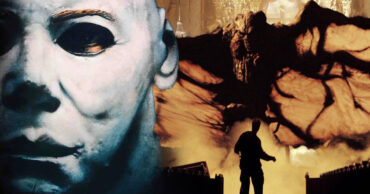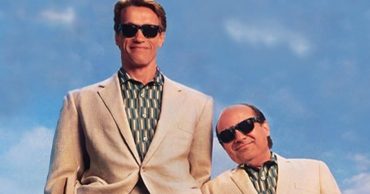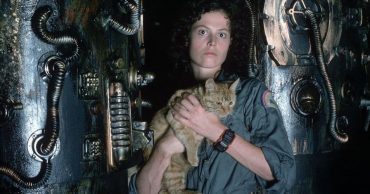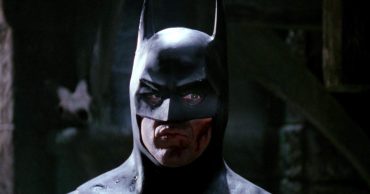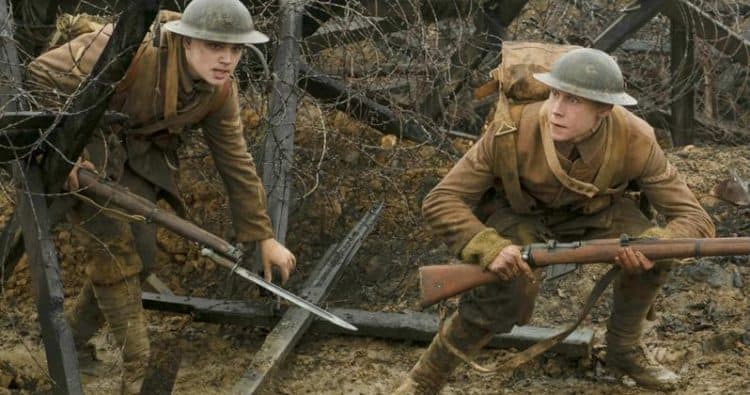
With 1917‘s Golden Globe win for Best Drama in the bag, the Sam Mendes-directed, Roger Deakins-shot WWI thriller has jumped up the bookmaker’s lists for the Best Picture Academy Award. Depicting the horror of trench warfare in real time and comprised of a series of “invisible” long takes that make the movie appear to just be one long continuous shot, its the comeback Mendes needed after the middling Spectre and his best chance at reprising both Best Director and Best Picture twenty years after American Beauty swept both honours.
Coming only five years after Birdman, it seems that serious movies appearing to be one shot are automatic fodder for the Academy Awards. That Alejandro G. Iñárritu-directed movie, shot by Emmanuel Lubezki, was a darling with both critics and the Academy, who acclaimed both its performances and technical virtuosity.
It’s worth noting however, that this level of Award-worthy attention only seems to extend itself to American films. Russian Ark, for example, an insanely virtuosic achievement filmed entirely in the Winter Palace in St Petersburg, wasn’t nominated for Best Foreign Language film at the Oscars. Neither was the Berlin-set thriller Victoria or the shocking U – July 22, depicting the Breivik murders in gripping real time. This is even despite these films actually being one take, as opposed to manipulated to appear as one in post.
Nonetheless, this begs the question: Why does Hollywood love to reward one-take movies – which have risen in popularity thanks to the increasing power of digital technology, handheld cameras and steadicams – so much? We have a few ideas.
It’s Undeniably Cinematic
From the party scene in I Am Cuba to the opening of Touch Of Evil to the Copacabana scene in Goodfellas, long takes have been a staple of auteurist cinema; a way for directors to put their own stamp on a screenplay and impart their vision on to the world. No for-hire director has ever felt the need to keep the film rolling for several minutes as the camera darts in and out of hallways: its almost solely the province of the artist! With the use of long takes a film is not just about what is being filmed but the way its being filmed; giving audiences an easy way to understand that, yes, this is something special: this is cinema itself.
For Mendes to take on the challenge makes sense: he experimented with a long take in Spectre, has experience directing theatre (comes in handy with actors required to keep going for over an hour and a half) and is the kind of director whose work is rather self-consciously stylised. His cinematic bonafides are well-established: with 1917 he can push the boat out and make the case as a one-of-a-kind auteur (even if this kind of film has already kind of been made before in other countries).
It Calls Attention to Itself
Whether audiences are aware if its several long shots seamlessly stitched together or simply one epic take, one-shot movies deliberately draw attention to themselves as works of cinema. To carry on that long a take for an entire movie, with the attendant costume switches, extra work, choreography, lighting and production cues needing to be absolutely right at every single moment, requires a high level of technical proficiency and co-ordination.
Whether they liked the story or the characters or the score or the style, viewers will inevitably leave the hall thinking: “How on earth did they do that?” This works to the movie’s advantage: the more critics and Oscar voters think about how they succeeded to make the movie, the more they are likely to succeed come Award season. This is in direct contrast to subtler, less Awarded works, such as Little Women, for example, where the editing and camerawork is used to move the story forward in a completely unselfconscious way.
Done Right, It Can Be Highly Immersive
Editing is arguably the most important part of a film. It takes viewers from one cut to the other, imparting visual information through the juxtaposition of different takes. The one-take movie is something different, giving you only one camera point throughout the entire film: the result can be utterly thrilling and utterly immersive. For example, U-July 22 makes you feel as if you are actually there with the children on Utøya, giving it the feel of a video game.
1917 is no different. Because its filmed to appear as one-take, it can lay claim to be one of the most authentic war movies ever made, really taking you inside the horror of battle itself. With Oscar campaigns and PR pitches as much about the narrative they can make about the movie as the film’s actual content, this immersive aspect is a huge selling point that makes it stand out against other conventionally shot war films.
It Forces Everyone to Be At The Top of Their Game
If you mess up a line in a one-take film, it costs a lot of time and a lot of money; at the very least hours’ worth of preparation and materials. The stakes can even be the difference between the film being made and being shelved. For Russian Ark, for example, production only had one day to make the film in the Hermitage, raising the stakes considerably. While Hollywood efforts such as Birdman and 1917 had more time and money to play with, everyone on set knows that if they make a mistake, it can waste hundreds of thousands, perhaps even millions, worth of dollars. This forces them to be at the top of their game, and makes the effort put in feel more Awards worthy.
For actors it gives them the chance to act more as if they are in a play than a movie, throwing themselves into their roles in order to get everything right. In the same token they can come across as more authentic, viewers knowing that their passions are really captured in the moment as opposed to created through a composite of cut together images: both raising the emotional stakes and making the acting work seem even stronger.
 Follow Us
Follow Us
